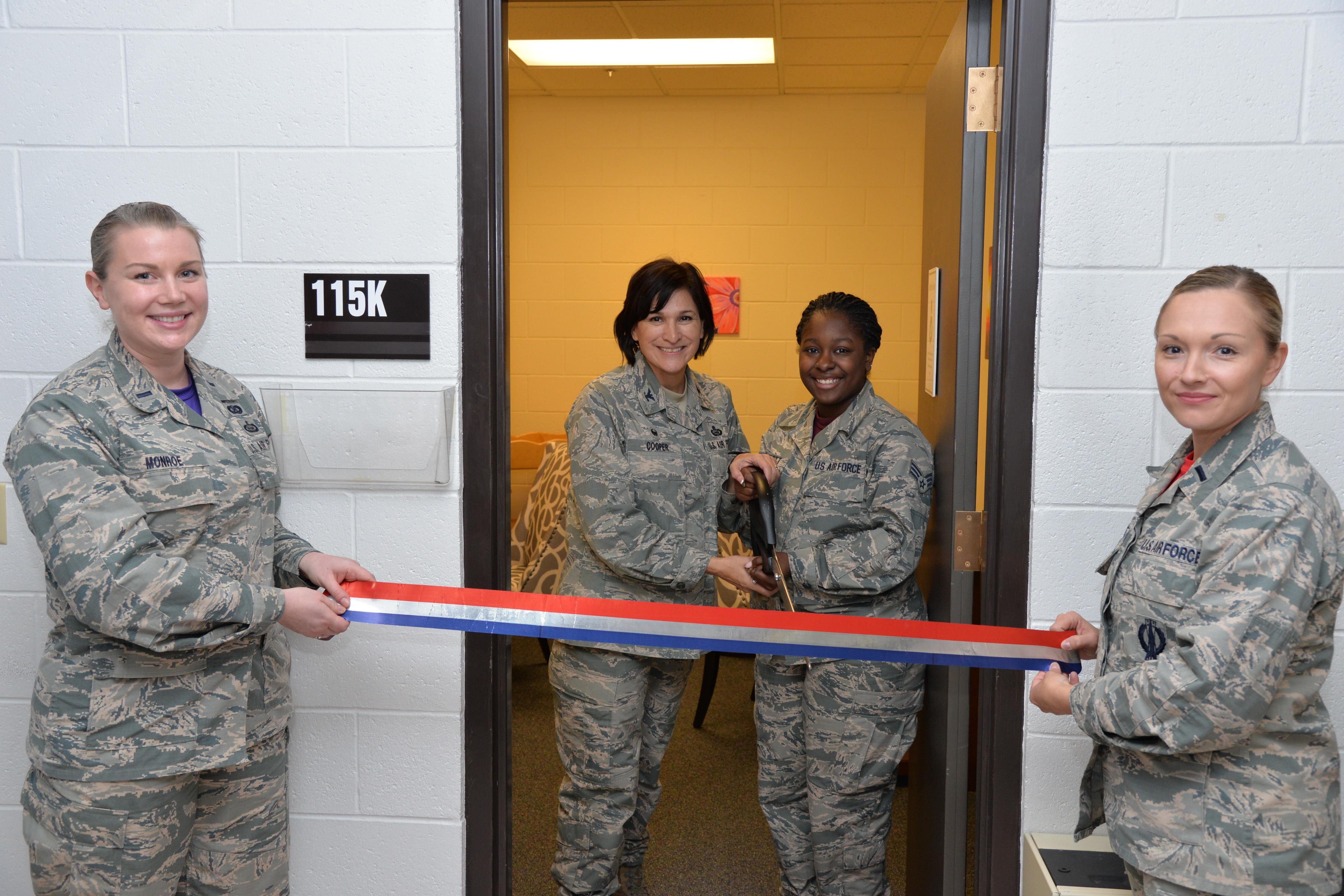The Air Force is now requiring units to provide private, secure and sanitary rooms for nursing mothers to breastfeed or express breast milk, according to a Wednesday release.
In an Aug. 15 guidance memorandum, the Air Force outlined procedures and requirements for setting up lactation rooms that can be locked from the inside.
Christy Nolta, deputy assistant secretary of the Air Force for reserve affairs and airman readiness, said airmen at the grassroots level brought the lack of an Air Force-wide lactation room policy to the service’s attention.
“Our job here is to do what we can to make it easier for airmen to serve,” Nolta said. “Women shouldn’t feel like they must choose between serving and being a mother.”
Nolta said that small policy tweaks such as this change can do a lot to improve airmen’s lives.
“It adds up, improves quality of life, and supports retention efforts across the service,” Nolta said. “We remain really focused on breaking more barriers to make continuing to serve an easy choice.”
RELATED

The Air Force said lactation rooms should be comfortable and welcoming places for nursing mothers, along the lines of a break room. They should be in the immediate vicinity of the workplace, with a table, a place to sit, electrical outlets, and comfortable temperatures and adequate lighting. They also must be near a source of hot and cold water for handwashing, and sanitizing breast pumps and parts.
“We received a lot of feedback from nursing mothers about having to pump or nurse in less than ideal facilities,” Maj. Alea Nadeem, the Air Force Women’s Initiative Team chief, said in the release. “They were having to pump in bathrooms, locker rooms, and borrowed offices, and this sometimes discourages new mothers from continuing to express milk.”
The Air Force’s new memo also provides guidance for when mothers should be allowed lactation breaks. Supervisors should provide both military and civilian nursing mothers reasonable lactation breaks — defined by Air Force Instruction 44-102 as 15 to 30 minutes every three to four hours — for at least one year postpartum.
Until now, bases have set up lactation rooms on their own. For example, Malmstrom Air Force Base in Montana opened five Mothers Rooms in 2016, so new mothers no longer had to use storage areas or empty offices. Those rooms had stations, each including a table, a chair, a power outlet and a lamp, as well as couches, rocking chairs, and changing areas for babies.
Stephen Losey is the air warfare reporter for Defense News. He previously covered leadership and personnel issues at Air Force Times, and the Pentagon, special operations and air warfare at Military.com. He has traveled to the Middle East to cover U.S. Air Force operations.





